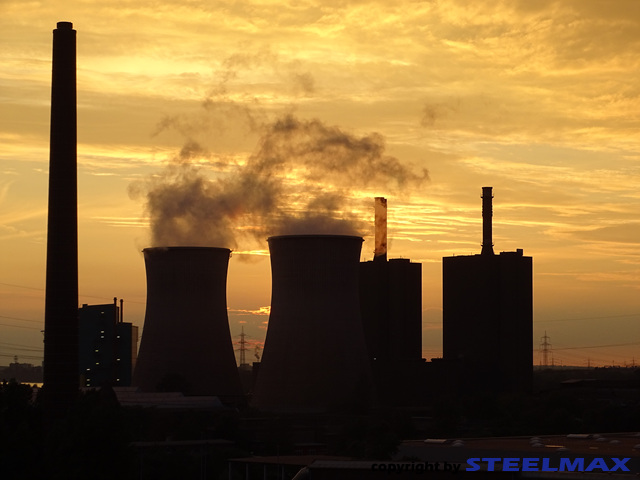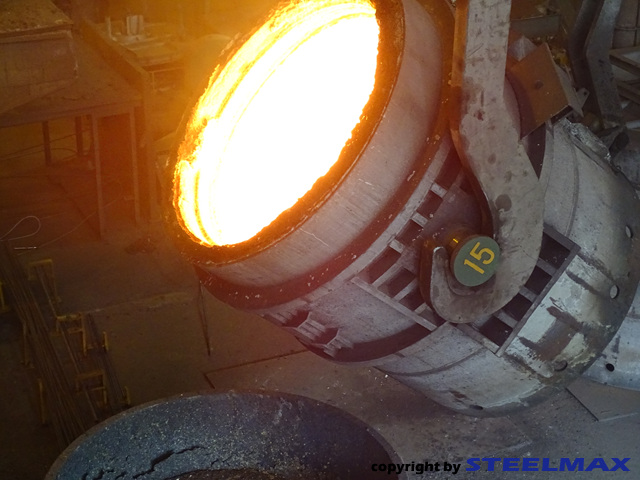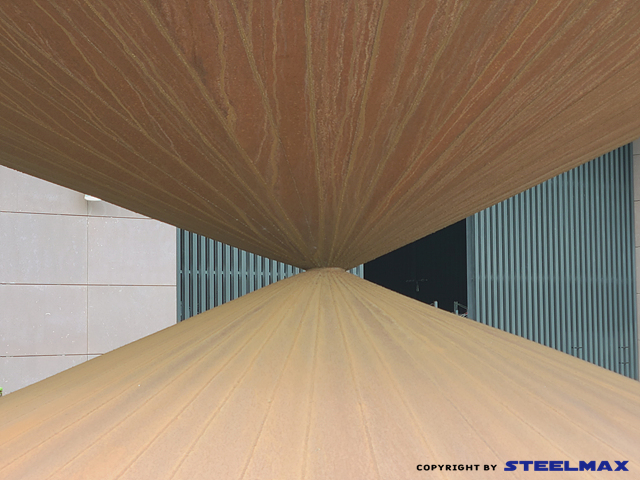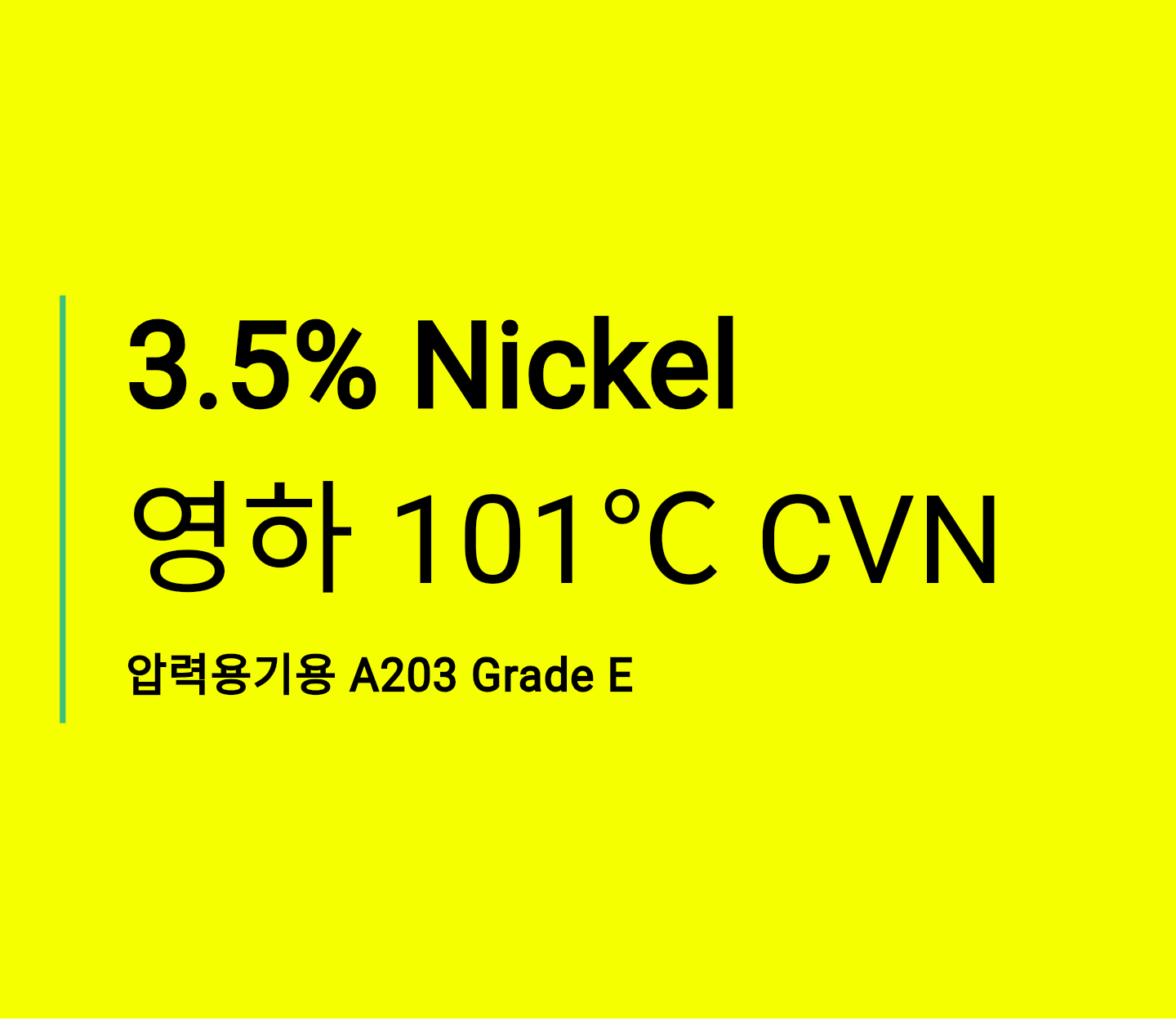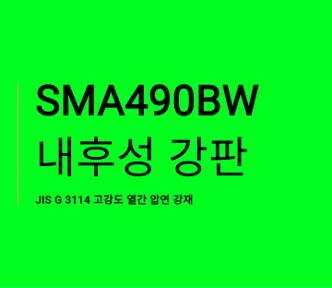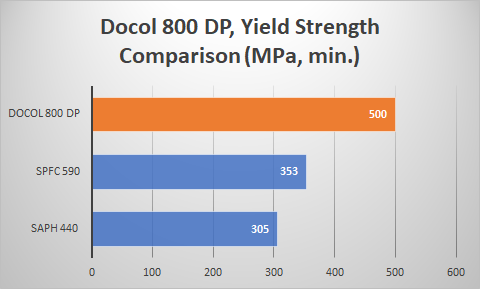
DOCOL®800 DP, High Yield Strength Plate
2018년 12월 18일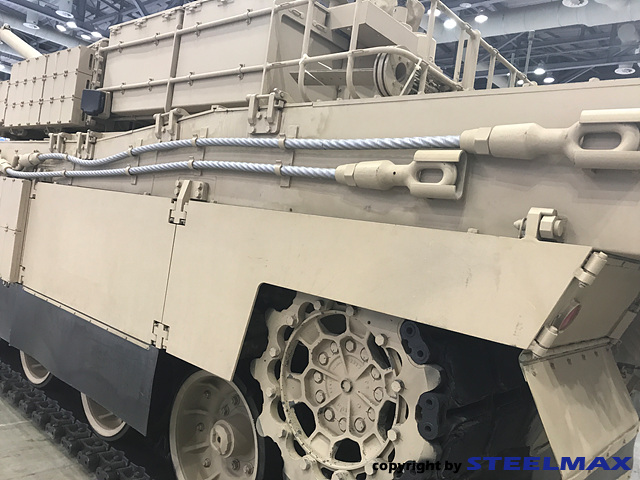
ARMOX 500T, 1250 MPa, Protection Plate
2019년 1월 14일S890QL, High Yield Plate, DIN-EN Specification
STEELMAX DIN-EN Story
극강의 고항복점 강판 규격입니다.
S890QL 이라는 용어를 풀어보면
S : Structural Steel
890 : minimum yield strength (MPa = N/㎟)
Q : Quenching and Tempering
L : Low notch toughness testing temperature
고항복점, 고인장 강도의 장점은 말이 필요 없습니다.
강재의 두께를 얇게 사용하고도
구조체의 구조적 안정성이 확보됩니다.
KS/JIS의 용접구조용강 중 가장 Grade가 높은
SM570-TMCP의 항복강도가 460 MPa 이상
인장강도 570~720 수준과 비교하면
얼마나 고항복, 고인장인지 알 수 있습니다.
DIN-EN 10025-6 Flat products made of high yield strength
structural steels in the quenched and tempered condition 규정에는
S460, S500, S550, S620, S690, S890, S960
Steel Grade가 있고, 세부적으로는 CVN에 따라
Q -20℃, QL – 40℃, QL1 – 60℃ 로 구분하고 있습니다.
| Steel Grade | EN10025-6 | ||
| S890QL / 1.8983 | S960QL / 1.8933 | ||
| Strength | Yield(㎫) | 890 min. 3≤t≤50 | 960 min. 3≤t≤50 |
| Tensile(㎫) | 940~1100. 3≤t≤50 | 980~1150. 3≤t≤50 | |
| Elongation (%) | 11 min | 10 min | |
| CVN Impact Test Longitudinal | 0℃ | 50 | ← |
| -20℃ | 40 | ← | |
| -40℃ | 30 | ← | |
| CVN Impact Test Transverse | 0℃ | 35 | ← |
| -20℃ | 30 | ← | |
| -40℃ | 27 | ← | |
| Chemical composition (%) | Carbon (C) | 0.20 max | ← |
| Silicon (Si) | 0.80 max | ← | |
| Manganese (Mn) | 1.70 max | ← | |
| Phosphorus (P) | 0.020 max | ← | |
| Sulfur (S) | 0.010 max | ← | |
| Nickel (Ni) | 2.0 max | ← | |
| Chromium (Cr) | 1.50 max | ← | |
| Molybdenum (Mo) | 0.70 max | ← | |
| Vanadium (V) | 0.12 max | ← | |
| Titanium (Ti) | 0.05 max | ← | |
| Copper (Cu) | 0.50 max | ← | |
| Zirconium (Zr) | 0.15 max | ← | |
| Niobium (Nb) | 0.06 max | ← | |
| Boron (B) | 0.0050 max | ← | |
| Nitrogen (N) | 0.015 max | ← | |
※ Quenching (담금질)
Operation which consists of cooling a ferrous products
more rapidly then in still air.
The use of a term specifying the cooling condition is recommended,
for example air-blast quenching, water quenching, step quenching, etc.
철강재를 공기 중에 두는 것보다 더 빠르게 냉각하는 작업으로
퀜칭이란 용어를 사용하며, 공냉 (송풍 퀜칭), 수냉, 단계 퀜칭처럼
냉각 조건을 붙여 사용하는 것이 바람직하다.
※ Tempering
Heat treatment applied to a ferrous product, generally after quench hardening,
or another heat treatment to bring the properties to the required level, and
consisting of heating to specific temperature (<Ac1 )and soaking one or
more time, followed by cooling at an appropriate rate.
Tempering generally leads to a reduction in hardness
but can, in certain cases, cause an increase in hardness.
철강재를 퀜칭 경화 후, 또는 특정 수준의 성질을 얻기 위하여 (<Ac1 ) 온도
이하의 특정 온도로 가열한 후 한두 번 균열화한 다음, 적당한 속도로
냉각하는 별도의 열처리로, 보통 템퍼링은 경도를 감소 시키지만,
어떤 경우에는 도리어 경도가 증가할 수도 있다.
스틸맥스는 연구소 수준의
깊이 있는 철강에 대한 이해를 바탕으로,
Carbon Steel, Special Steel, Stainless, Functional,
Ni-Alloy, Cu-, Al-, Co-, Ti-, Mg-, Metal, Forging.
Plate, Sections, H-Beam, Round, Angle, Channel,
Rail, Crane Rail, Flat, I-Beam, Pipe & Tube, SMLS.
ASTM, ASME, AISI, API, SAE, AMS, KS, JIS, CSA,
DIN-EN, NORSOK, DNV, ABS, GL, LR, KR, NK, RS.
국가규격, 국제단체 규격, 국제협회 규격부터
Mill Maker Standards까지 공급하고 있습니다.
Citius, Altius, Fortius,
더 빠르게, 더 높이, 더 강하게가 요구되는 올림픽처럼
공급이 어려운 철강재 공급에는
진정한 전문 선수를 필요로 합니다.




